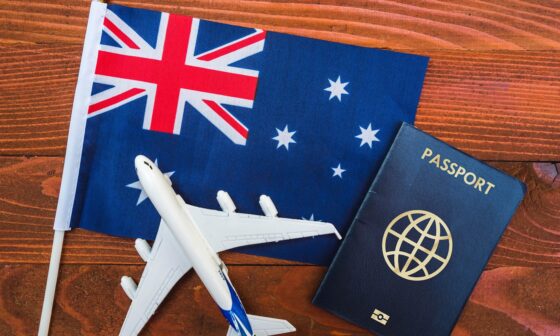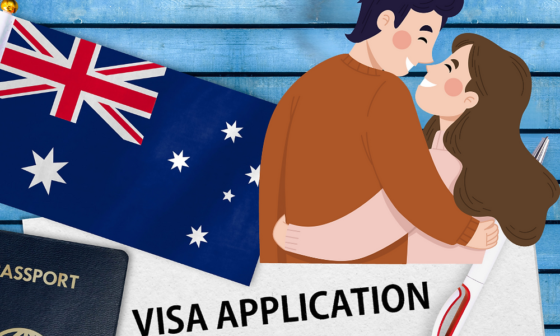Choosing to relocate your family to a new nation is one of the most important life decisions you can make. It’s more than just choosing a better location to live; it’s about establishing a bright future for yourself and your loved ones. The process of applying for an Australia Family Visa for immigrants may appear difficult at first, but with the appropriate advice, it can lead to a wonderful new chapter in life. In this article, I will guide you through how to apply for an Australia Family Visa, providing essential tips and insights to ensure a smooth and successful application process.
Family Immigration to Australia
Australia is known for its high standard of living, world-class healthcare, and exceptional educational possibilities. According to the 2023 HSBC Expat Explorer Survey, Australia is one of the top ten nations for family life. Families are drawn to Australia because of its stable economy, safe environment, and opportunity to establish a prosperous future together. However, knowing how to apply for an Australia Family Visa is critical to making this goal a reality.
Understanding Australia’s Family Visa
Australia provides a variety of family visa alternatives, each tailored to specific circumstances. These visas allow families to reconnect and live together in Australia indefinitely or for an extended duration. The most prevalent family visas are:
- Partner Visa (Subclass 820/801): For the spouses or de facto partners of Australian citizens, permanent residents, or eligible New Zealand citizens.
- Parent Visa (Subclass 103): Allows parents of Australian citizens or permanent residents to move to Australia.
- Child Visa (Subclass 101): Allows children of Australian citizens, permanent residents, or qualified New Zealand citizens to reside in Australia.
- Other Family Visas: This includes visas for elderly dependant relatives, remaining relatives, and caregivers.
How To Apply for an Australia Family Visa for Immigrants
Here is a step-by-step guide on how to apply for Australia family visa.
#1. Determine the Right Visa Type for Your Family
Choosing the appropriate visa is the first crucial step in the application process.
- Partner Visa: This visa permits you to remain in Australia temporarily and apply for permanent residency later if you are married to or in a de facto relationship with an Australian citizen, permanent resident, or eligible New Zealand citizen.
- Parent Visa: Parents of Australian citizens or permanent residents may apply to live in Australia. This visa has several subclasses based on your circumstances, such as whether you are applying from within or outside Australia.
- Child Visa: If your child is under the age of 18 and is dependent on you, and you are an Australian citizen or permanent resident, this visa allows them to stay in Australia forever.
#2. Gather Essential Documents
The documentation you give will play an important part in the success of your visa application.
- Proof of Relationship: For partner and child visas, evidence of your relationship is required. This can contain marriage documents, shared financial statements, photos, and letters from friends and family.
- Identity Documents: All applicants must present passports, birth certificates, and national identity cards.
- Health and Character Requirements: All applicants must adhere to Australia’s health and character standards. This normally entails undergoing a medical examination and providing police clearance certifications.
- Financial Evidence: You may be required to demonstrate that you can financially support your family throughout your stay in Australia, particularly if applying for a parent visa.
#3. Understand Sponsorship Requirements
Sponsorship is a critical component of family visa applications.
- Sponsor Eligibility: The sponsor must be an Australian citizen, permanent resident, or eligible New Zealand citizen. They must also demonstrate that they can assist you and your family members during your initial stay in Australia.
- Sponsorship Obligations: Sponsors must provide financial support, including housing, for the first two years after the visa is issued.
- Sponsorship Approval: The Department of Home Affairs will determine your sponsor’s eligibility and capacity to meet their commitments.
#4. Submit Your Visa Application
Once you’ve gathered your documentation and your sponsor has been accepted, you’re ready to submit your visa application:
- Online Application: Most family visa applications can be submitted online via the ImmiAccount portal. This allows you to upload papers, pay fees, and keep track of your application’s status.
- Visa Application Fee: Fees vary by visa subclass. For example, the Partner Visa (Subclass 820/801) application fee is approximately AUD 7,850. Make sure you maintain track of all payments.
- Waiting Periods: Processing times for family visas, particularly parent visas, can be many years. Partner visas normally take between 18 and 24 months. It is critical to apply as soon as possible and remain patient during this time.
#5. Use a Template to Organize Your Application
To make the procedure easier, I recommend using the Australia Family Visa Application Template. This template allows you to keep track of all essential paperwork, sponsorship information, and application progress, ensuring that nothing is overlooked and your application is as good as possible.
#6. Prepare for the interview (if necessary)
In some situations, you or your sponsor may be asked to attend an interview.
Advertisements
- Interview Purpose: The interview is typically used to confirm the validity of your relationship and the facts provided in your application.
- Interview Tips: Respond honestly and clearly. Prepare by studying your application and supporting documentation.
- Post-Interview: Following the interview, there may be further requests for information or documents. Respond quickly to avoid delays.
Processing Time for an Australian Family Visa
The processing time for an Australia Family Visa is determined by the individual visa subclass you are applying for, as well as other criteria such as the volume of applications being processed, the accuracy of your documentation, and any additional checks required.
Here’s a broad summary of processing timelines for some of the most popular family visas.
- Partner Visa (Subclass 820/801): The processing time for a partner visa might range between 18 and 24 months. The temporary visa (Subclass 820) typically lasts 18–21 months, whereas the permanent visa (Subclass 801) takes approximately 10–14 months after the temporary visa is granted.
- Parent Visa (Subclass 103): Due to the large volume of applications and restricted number of visas available each year, the processing period for the Parent Visa (Subclass 103) can be fairly extensive, ranging from 5 to 30 years. The Contributory Parent Visa (Subclass 143), which demands a substantial financial contribution, normally has a processing duration of 4 to 6 years.
- Child Visa (Subclass 101): Processing times for a child visa typically range between 8 and 15 months. The period varies depending on whether the application is made within or outside of Australia, as well as the case’s complexity.
- Other Family Visas: Visas for old dependant relatives, remaining relatives, and caretakers, like the Parent Visa, have processing times ranging from 5 to 30 years, depending on the exact circumstances and visa subclass.
Factors Impacting Processing Time
Several things can affect how long your family visa application takes:
- Documentation Completeness: Correctly submitting all required paperwork will help to avoid delays. Incomplete programs frequently delay processing.
- Health and Character Checks: Additional checks, such as police certifications or medical exams, may lengthen the processing time.
- High Demand and Quotas: Some visas, such as parent visas, are subject to quotas, which might lead to longer processing delays depending on application traffic.
- Policy Changes: Shifts in immigration policy can affect processing delays, so staying informed is critical.
How to Manage the Waiting Period
Given the potential for significant wait times, it is critical to manage expectations and plan accordingly:
- Apply Early: Begin your application as soon as you become eligible to prevent delays and possible policy changes.
- Stay Informed: Check your ImmiAccount application progress regularly and keep an eye out for Department of Home Affairs developments.
- Consider Temporary Options: While you wait for your family visa, you could visit or stay in Australia on a temporary visa.
- Communicate with Your Sponsor: Stay in touch with your sponsor to ensure they are prepared to meet their commitments once your visa is accepted.
Managing these things correctly will help you get through the waiting time more easily and decrease the stress of uncertainty.
Sponsorship Tips for an Australia Family Visa
Securing excellent visa sponsorship is critical to your family visa application. Here are some considerations to ensure a smooth process:
#1. Confirm sponsor eligibility
Your sponsor must be an Australian citizen, permanent resident, or eligible New Zealand citizen of at least 18 years of age.
Advertisements
#2. Prepare the Essential Documents
Make sure your sponsor produces documentation proving their financial ability to assist you, such as bank statements or tax returns. Include details regarding where you plan to stay, such as rental agreements or property documents.
A statement from your sponsor confirming their commitment can help boost your application.
#3. Understanding Sponsorship Obligations
Your sponsor is legally expected to provide financial assistance and access to healthcare during your first stay. Ensure that they understand these commitments.
#4. Strengthen Your Application
Provide detailed documentation of your connection, such as common funds or communication records.
- Address Red Flags: Address any possible concerns, such as age gaps or brief connections, directly, with supporting evidence.
#5. Be Organized and Communicate
- Use a Checklist: A checklist can help you keep track of all the relevant paperwork and deadlines.
- Regular communication: Maintain contact with your sponsor and reply promptly to any inquiries from the Department of Home Affairs.
#6. Seek Professional Help as Needed
- Seek Advice: If your situation is complicated, speak with a migration agent or lawyer to help improve your application.
- Use Support Services: Community organizations can offer additional support, particularly if difficulties occur.
Follow these recommendations to ensure a stronger and more efficient sponsorship procedure for your Australia Family Visa application.
Common Questions About Applying for an Australia Family Visa
Can I put my children on the family visa application?
Yes, dependent children can normally be included in a visa application. They must meet the qualifying requirements, such as being under 18 years old or dependent on you if over 18.
What will happen if my family visa application is denied?
If your application is turned down, you will receive a letter stating why. Depending on the circumstances, you may be able to appeal the decision or reapply by correcting the issues that led to the refusal.
Do I have to be in Australia to apply for a family visa?
Not necessarily. Certain visas, such as the Parent Visa (Subclass 103), must be sought from outside Australia. Other visas, such as the Partner Visa (Subclass 820), can be applied for while in Australia.
Is there an age limit to apply for a Parent Visa?
There is no formal age limit for filing for a parent visa, however, age may affect eligibility for specific subclasses, such as the Aged Parent Visa (Subclass 804), which requires the applicant to be of pension age.
Template for the Family Visa Application Process
To help with your visa application, I’ve produced an Australia Family Visa Application Template. This template will walk you through each stage of the process, from document gathering to tracking your application’s status. It is a useful tool for ensuring that your application is completed and filed correctly.
Australia Family Visa Application Template
Key Takeaways
- Choosing the suitable family visa subclass is critical to a successful application.
- Detailed and accurate paperwork, particularly confirmation of ties and financial stability, is critical for preventing delays.
- Your sponsor plays an important role in the visa application process; make sure they meet all standards.
- Use a template to organize your application procedure and guarantee that no details are overlooked.
- Family visa processing times can be lengthy, therefore, patience and planning are required.
Conclusion
Applying for an Australia Family Visa is an important step toward starting a new life in one of the world’s most attractive locations. You can improve your chances of success by properly preparing, understanding the rules, and using tools such as a visa application template. What steps would you take today to help your family fulfill their dream of living in Australia?
Advertisements



